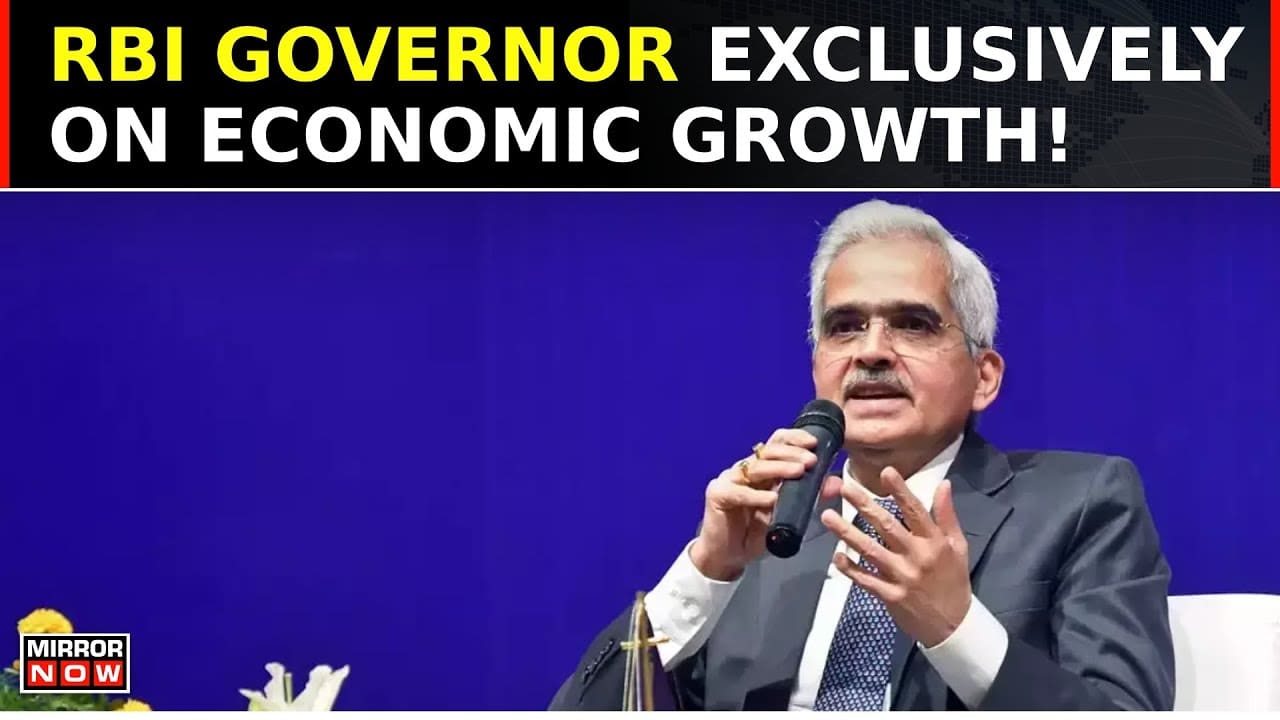RBI Governor Optimistic About India’s Economic Growth

In a recent media interaction, Sanjay Malhotra, the Governor of the Reserve Bank of India (RBI), expressed a positive outlook for the Indian economy. He emphasized the central bank’s commitment to ensuring liquidity in the market, which is crucial for maintaining interest rates. Malhotra’s insights come at a time when economic indicators suggest a potential upswing in growth. This article delves into his views on growth, inflation, and the RBI’s strategies moving forward.
Optimism for Economic Growth
Governor Malhotra highlighted several factors that contribute to his optimism about India’s economic growth. He pointed out that the RBI continuously analyzes various parameters, including high-frequency indicators. These indicators show promising trends in agriculture and manufacturing sectors. For instance, good reservoir levels indicate a healthy agricultural output, which is vital for the economy.
Moreover, a recent Nielsen survey revealed that consumption growth has surpassed 7%. This figure is significant as it reflects consumer confidence and spending, which are essential for economic expansion. Additionally, the Purchasing Managers’ Index (PMI) indicates a rise in manufacturing activity, further supporting the notion of a recovering economy. Malhotra’s assessments suggest that these positive trends could lead to sustained growth in the coming months.
Balancing Growth and Inflation
When asked about the RBI’s priorities, Malhotra clarified that the central bank’s primary objective is to maintain inflation and price stability. Unlike some countries that focus on dual objectives, the RBI operates under a clear mandate. While inflation control remains paramount, the RBI is also mindful of supporting growth, especially as inflation rates begin to decline.
Malhotra stated that the RBI’s neutral stance allows for proactive responses to changing macroeconomic conditions. This flexibility is crucial in a dynamic economic environment. As inflation moderates, the RBI can adopt measures that foster growth without compromising its primary goal of price stability. This balanced approach is essential for ensuring long-term economic health.
Liquidity and Interest Rate Transmission
One of the key topics discussed was the RBI’s strategy regarding liquidity and interest rates. Malhotra assured that the central bank would provide the necessary liquidity to facilitate the smooth transmission of interest rate changes. He explained that revised rates would primarily affect new deposits, while existing deposit rates would remain unchanged for their tenure.
The Marginal Cost of Funds-Based Lending Rate (MCLR) is also a focal point for the RBI. Malhotra indicated that revisions to the MCLR typically occur every six months, with adjustments expected in June. This systematic approach ensures that lending rates remain aligned with market conditions, promoting stability in the financial system.
Disciplinary Measures for Banks
In addressing the RBI’s decision to implement cease-and-desist norms for banks, Malhotra emphasized that such measures are taken after careful consideration. The RBI aims to give banks ample opportunity to comply with regulations before resorting to disciplinary actions. These measures are viewed as a last resort, applied only in rare cases when other options have failed.
Malhotra reiterated that these actions are taken in the public interest. The RBI’s commitment to maintaining a robust banking system is crucial for fostering trust and stability in the financial sector. By ensuring that banks adhere to regulations, the RBI aims to protect consumers and promote a healthy economic environment.
Observer Voice is the one stop site for National, International news, Sports, Editor’s Choice, Art/culture contents, Quotes and much more. We also cover historical contents. Historical contents includes World History, Indian History, and what happened today. The website also covers Entertainment across the India and World.

